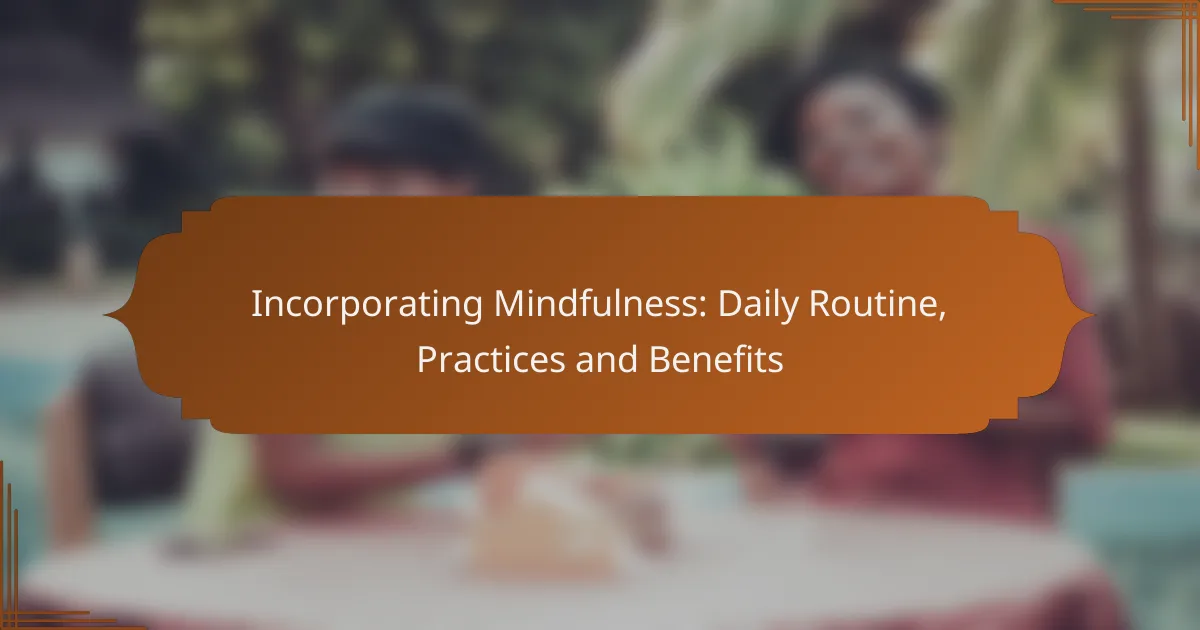Incorporating mindfulness into your daily routine can transform your mental clarity and emotional well-being by promoting awareness and presence in everyday moments. Simple practices such as guided meditation, mindfulness journaling, and yoga can significantly reduce stress and enhance focus, ultimately improving your overall quality of life.
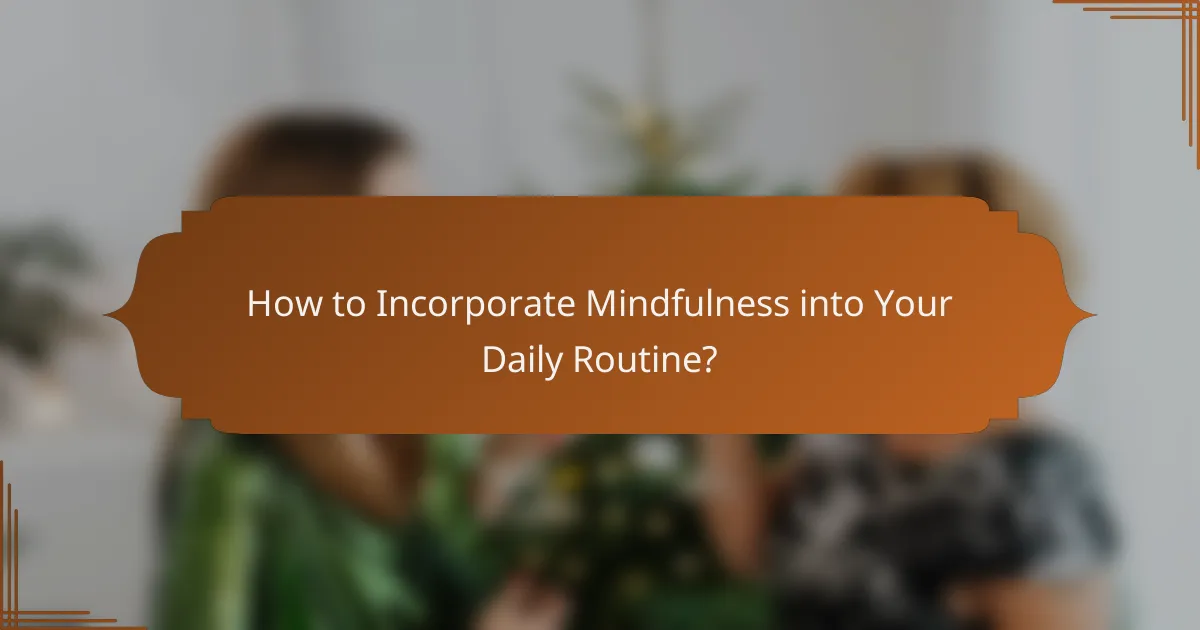
How to Incorporate Mindfulness into Your Daily Routine?
Incorporating mindfulness into your daily routine involves integrating simple practices that promote awareness and presence throughout the day. By focusing on specific moments, you can enhance your mental clarity and emotional well-being.
Morning meditation practices
Starting your day with morning meditation can set a positive tone for the hours ahead. Aim for 5-15 minutes of focused breathing or guided meditation to cultivate a sense of calm and intention.
Consider using apps or online resources for guided sessions, which can help you stay on track. Choose a quiet space where you won’t be disturbed to maximize your focus.
Mindful eating techniques
Mindful eating involves paying full attention to the experience of eating, which can enhance your relationship with food. Try to eat without distractions, focusing on the taste, texture, and aroma of each bite.
Chew slowly and savor your meals, aiming to recognize hunger and fullness cues. This practice can help prevent overeating and promote healthier choices.
Evening reflection exercises
Evening reflection exercises allow you to review your day and acknowledge your thoughts and feelings. Spend 5-10 minutes journaling about what went well and what you learned.
This practice can help you process experiences and prepare for the next day with a clearer mindset. Consider asking yourself questions like, “What am I grateful for today?” to foster positivity.
Scheduled breaks for mindfulness
Incorporating scheduled breaks throughout your day can enhance mindfulness and reduce stress. Set aside 5 minutes every hour to step away from your tasks and engage in a mindful activity, such as stretching or simply breathing.
Use reminders on your phone or computer to help you remember these breaks. This can improve focus and productivity while promoting a sense of calm.
Breathing exercises throughout the day
Practicing breathing exercises during the day can help you maintain mindfulness and reduce anxiety. Try techniques like the 4-7-8 method, where you inhale for 4 seconds, hold for 7 seconds, and exhale for 8 seconds.
Incorporate these exercises whenever you feel overwhelmed or need a moment to recenter. Even a few deep breaths can significantly shift your mental state and enhance your overall well-being.
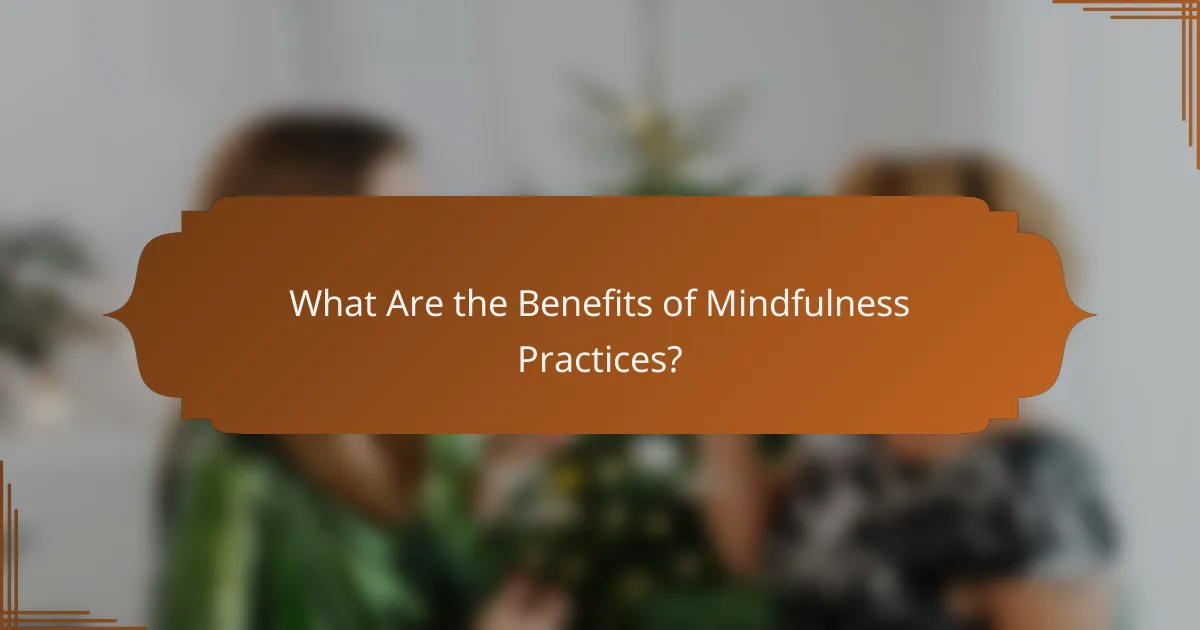
What Are the Benefits of Mindfulness Practices?
Mindfulness practices offer numerous benefits, including reduced stress, improved focus, and enhanced emotional well-being. By fostering present-moment awareness, these techniques can significantly enhance overall quality of life.
Reduced stress and anxiety
Mindfulness practices are effective in reducing stress and anxiety by promoting relaxation and awareness of the present moment. Techniques such as deep breathing and body scans help individuals recognize and manage their stress responses.
Regular mindfulness exercises can lower cortisol levels, the hormone associated with stress. Engaging in mindfulness for just a few minutes daily can lead to noticeable improvements in stress management.
Improved focus and concentration
Practicing mindfulness enhances focus and concentration by training the mind to remain present. This mental discipline allows individuals to minimize distractions and improve task completion.
Simple mindfulness exercises, like focusing on breath or observing thoughts without judgment, can sharpen cognitive abilities. Over time, individuals may find they can sustain attention for longer periods, benefiting both personal and professional tasks.
Enhanced emotional well-being
Mindfulness contributes to enhanced emotional well-being by fostering a greater understanding of one’s thoughts and feelings. This self-awareness helps individuals respond to emotions more effectively rather than reacting impulsively.
Incorporating mindfulness into daily routines can lead to increased resilience against negative emotions. Practicing gratitude and self-compassion as part of mindfulness can further boost overall happiness and life satisfaction.
Better relationships and communication
Mindfulness improves relationships and communication by encouraging active listening and empathy. Being present during conversations allows individuals to connect more deeply with others and understand their perspectives.
Practicing mindfulness can reduce misunderstandings and conflicts in relationships. Techniques such as mindful listening and non-judgmental responses can enhance interpersonal dynamics, leading to healthier and more fulfilling connections.
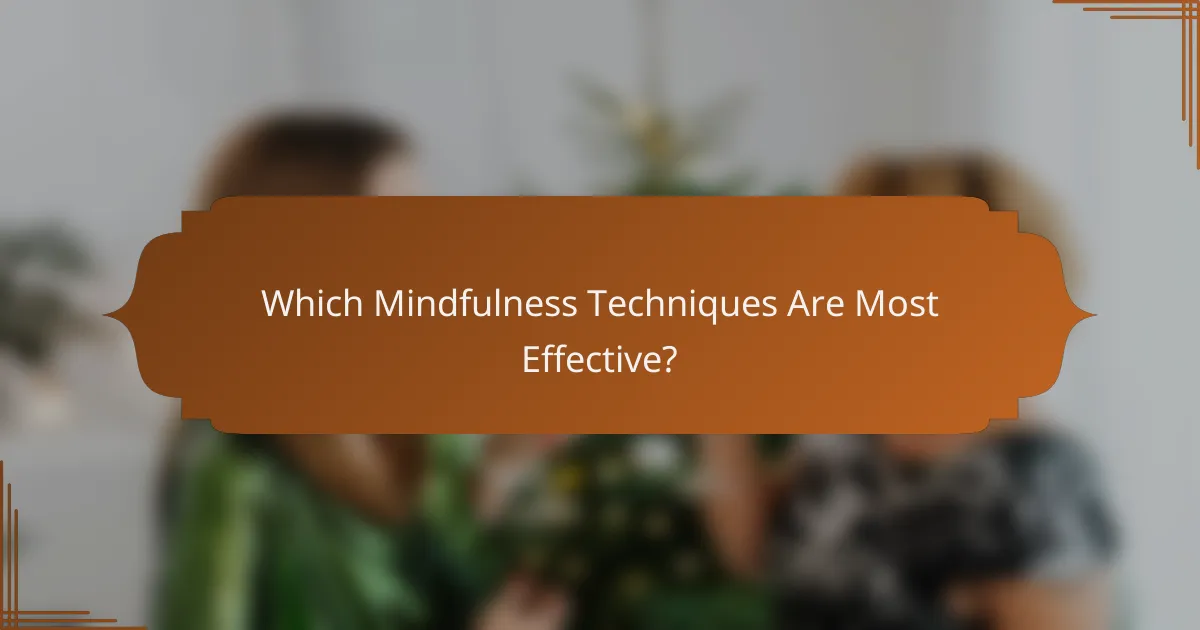
Which Mindfulness Techniques Are Most Effective?
The most effective mindfulness techniques include guided meditation apps, body scan techniques, mindfulness journaling, and yoga practices. Each method offers unique benefits and can be tailored to fit individual preferences and lifestyles.
Guided meditation apps
Guided meditation apps provide structured sessions led by experienced instructors, making them accessible for beginners. Popular options include Headspace, Calm, and Insight Timer, which offer a variety of themes and durations, typically ranging from 5 to 30 minutes.
When using these apps, consider your specific goals, such as stress reduction or improved focus. Regular use can enhance your mindfulness practice, but be mindful of screen time and choose sessions that resonate with you.
Body scan techniques
Body scan techniques involve systematically focusing on different parts of the body to promote relaxation and awareness. This practice can help identify areas of tension and encourage a deeper connection between the mind and body.
To perform a body scan, find a quiet space, lie down comfortably, and mentally check in with each body part, starting from your toes and moving up to your head. Aim for a duration of 10 to 20 minutes, and try to practice this technique several times a week for optimal benefits.
Mindfulness journaling
Mindfulness journaling encourages reflection and self-awareness by allowing you to express thoughts and feelings on paper. This practice can help clarify emotions and enhance your understanding of daily experiences.
Set aside time each day to write about your thoughts, focusing on the present moment and your feelings. Aim for 5 to 15 minutes, and consider prompts like “What am I grateful for today?” or “What did I notice in my surroundings?” to guide your entries.
Yoga and movement practices
Yoga and movement practices integrate physical activity with mindfulness, promoting both mental and physical well-being. Styles like Hatha, Vinyasa, or Yin yoga can enhance flexibility, strength, and relaxation.
To incorporate mindfulness into your movement, focus on your breath and bodily sensations during each pose. Aim for sessions lasting 20 to 60 minutes, and consider joining a local class or following online tutorials to maintain motivation and guidance.
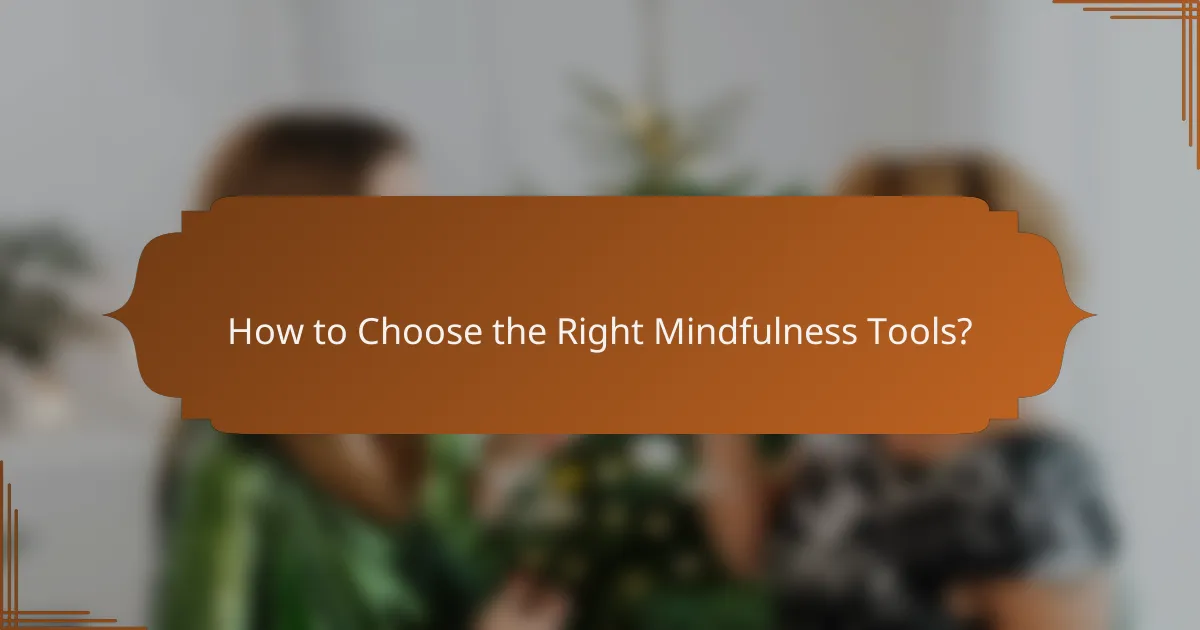
How to Choose the Right Mindfulness Tools?
Selecting the right mindfulness tools involves understanding your personal preferences and goals. Consider what aspects of mindfulness you want to focus on, such as meditation, stress reduction, or emotional awareness, and then explore options that align with those needs.
Comparing meditation apps
When comparing meditation apps, look for features that suit your lifestyle, such as guided sessions, customizable timers, and progress tracking. Popular apps like Headspace and Calm offer free trials, allowing you to test their content before committing.
Consider user reviews and ratings to gauge effectiveness and ease of use. A good app should provide a variety of meditation styles, from mindfulness to loving-kindness, catering to different preferences.
Evaluating mindfulness courses
Mindfulness courses vary widely in format, duration, and cost. Online platforms like Coursera and Udemy offer courses ranging from a few hours to several weeks, often priced between $30 and $200. Look for courses that include interactive elements, such as community discussions or instructor feedback.
Check for certifications or endorsements from recognized mindfulness organizations, as these can enhance the credibility of the course. Additionally, consider the instructor’s background and experience in mindfulness practices.
Assessing books on mindfulness
When assessing books on mindfulness, focus on those that resonate with your learning style. Titles like “The Miracle of Mindfulness” by Thich Nhat Hanh or “Wherever You Go, There You Are” by Jon Kabat-Zinn are highly regarded for their practical insights and accessible language.
Look for books that include exercises or guided practices to help you apply concepts in real life. Reading reviews and summaries can also help you determine if a book aligns with your mindfulness goals.
